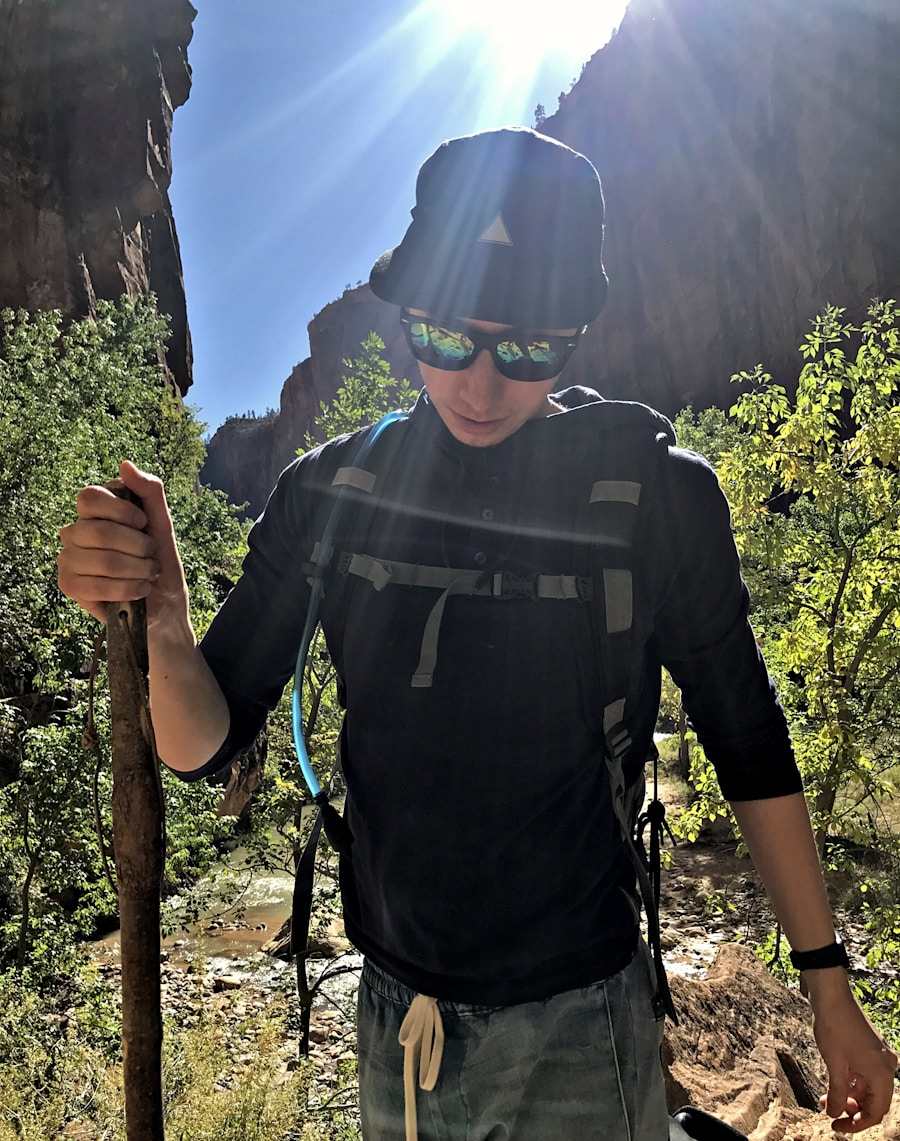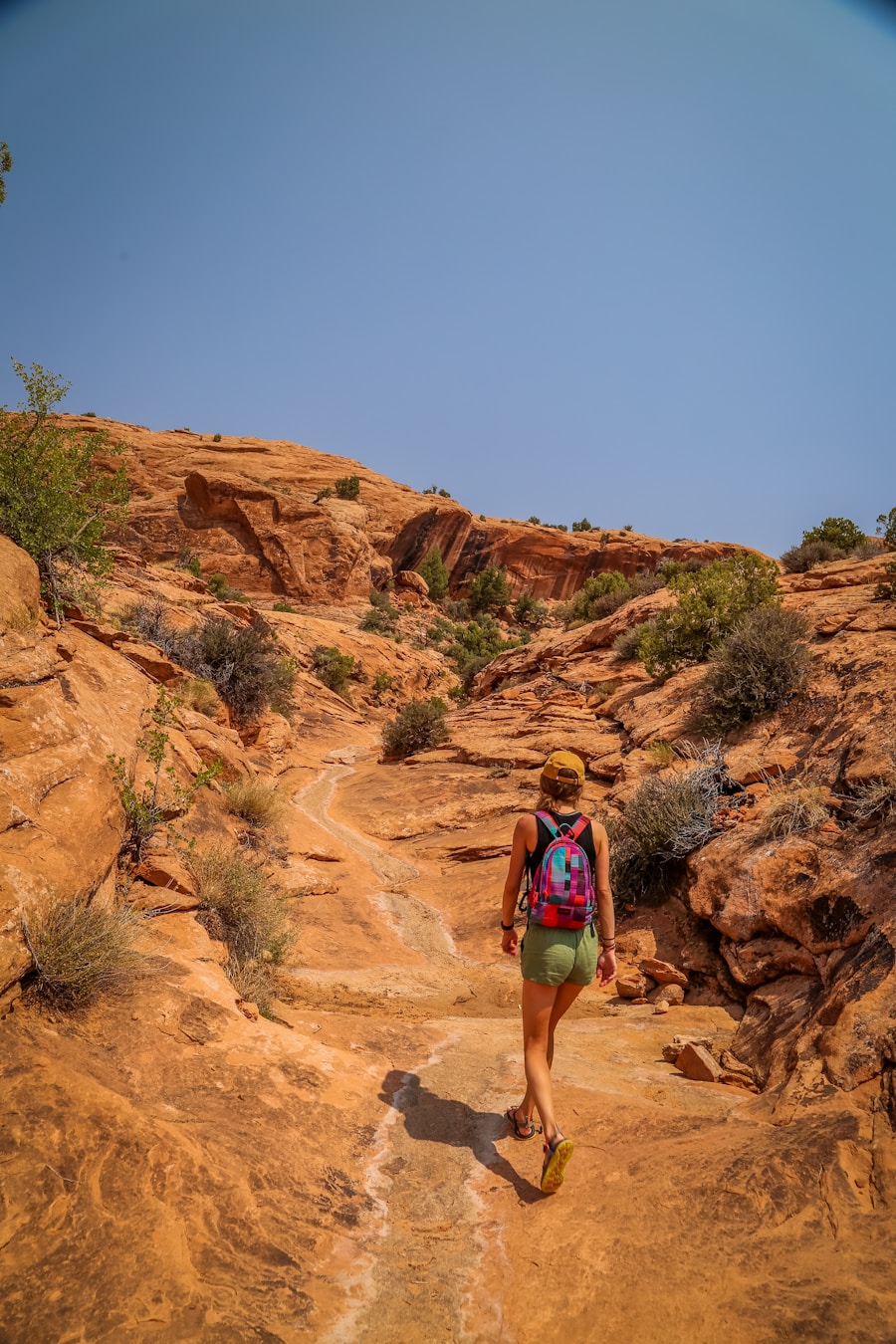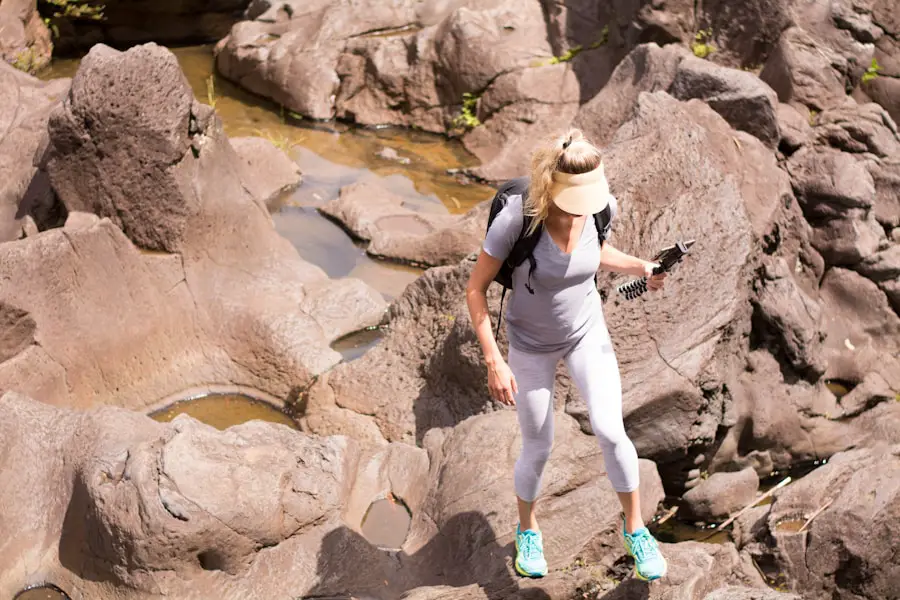When it comes to hiking in Arizona, selecting the right footwear is paramount. The state’s diverse terrain ranges from rocky trails in the Grand Canyon to sandy paths in the Sonoran Desert, each demanding specific features from hiking boots. A good pair of hiking boots should provide ample support, traction, and durability to withstand the rigors of these varied landscapes.
For instance, boots with a stiffer sole are ideal for rocky terrains, as they offer better stability and protect your feet from sharp stones. Brands like Merrell and Salomon have developed models specifically designed for rugged conditions, featuring Vibram outsoles that enhance grip on uneven surfaces. Moreover, breathability is a crucial factor to consider when choosing hiking boots for Arizona’s climate.
The desert heat can be intense, and having boots that allow for proper ventilation can prevent overheating and blisters. Look for boots made from materials like mesh or those with moisture-wicking linings. Waterproof options may seem appealing, especially for hikes near water sources, but they can trap heat and moisture inside, leading to discomfort.
Therefore, a balance between breathability and protection is essential. Additionally, consider the fit; a well-fitted boot should allow for some wiggle room in the toes while providing a snug fit around the heel to prevent slippage.
Key Takeaways
- Choose hiking boots with good ankle support and a sturdy sole for Arizona’s rugged terrain.
- Dress in lightweight, breathable clothing that provides sun protection and can be layered for variable weather conditions.
- Always carry a detailed map, GPS device, and compass to navigate Arizona’s trails, which can be challenging to follow.
- Protect yourself from the intense Arizona sun with a wide-brimmed hat, UV-blocking sunglasses, and high SPF sunscreen.
- Stay hydrated on Arizona hikes with a durable water bottle, hydration pack, or water treatment options to purify natural water sources.
Clothing: Dressing for the Desert Climate and Variable Weather
Dressing appropriately for Arizona’s desert climate is crucial for both comfort and safety during hikes. The state is known for its extreme temperature fluctuations, with scorching heat during the day and cooler temperatures at night. Lightweight, moisture-wicking fabrics are ideal for daytime hikes, as they help regulate body temperature and wick sweat away from the skin.
Long-sleeved shirts and lightweight pants not only protect against sun exposure but also shield against prickly vegetation and insects that are common in the desert environment. Layering is another effective strategy for managing Arizona’s variable weather. A breathable base layer can be complemented by an insulating mid-layer for cooler mornings or evenings.
A lightweight, packable jacket can serve as an outer layer to protect against unexpected rain or wind. Fabrics like nylon or polyester are excellent choices due to their quick-drying properties. Additionally, hikers should consider wearing a wide-brimmed hat to shield their face and neck from the sun, along with lightweight gloves if hiking in cooler months or higher elevations where temperatures can drop significantly.
Navigation: Maps, GPS, and Compasses for Navigating Arizona’s Trails

Navigating Arizona’s vast wilderness requires a solid understanding of various navigation tools. While GPS devices and smartphone apps have become increasingly popular among hikers, traditional maps and compasses remain invaluable resources. Many trails in Arizona are well-marked, but having a detailed topographic map can provide insights into elevation changes, water sources, and potential hazards that may not be apparent on digital platforms.
For instance, the US Forest Service publishes detailed maps of national forests that include trail conditions and points of interest. In addition to maps, a reliable GPS device can enhance navigation by providing real-time location tracking. However, it’s essential to remember that electronic devices can fail due to battery depletion or lack of signal in remote areas.
Therefore, carrying a compass as a backup is advisable. Understanding how to read a compass and use it in conjunction with a map can be a lifesaver in unfamiliar terrain. Familiarizing oneself with key landmarks and trail intersections before embarking on a hike can also aid in navigation and boost confidence on the trail.
Sun Protection: Hats, Sunglasses, and Sunscreen for the Intense Arizona Sun
| Item | UPF Rating | UV Protection | Price Range |
|---|---|---|---|
| Wide-brimmed hat | UPF 50+ | Blocks 98% of UV rays | 20 – 50 |
| Sunglasses | UV400 | Blocks 100% of UVA and UVB rays | 15 – 200 |
| Sunscreen | SPF 30 – 50+ | Blocks 97% – 98% of UVB rays | 8 – 30 |
The intensity of the Arizona sun cannot be overstated; it poses significant risks to hikers who venture into the outdoors unprotected. Sunburns can occur within minutes of exposure, making it essential to equip oneself with adequate sun protection gear. A wide-brimmed hat is one of the most effective ways to shield your face and neck from harmful UV rays.
Look for hats made from lightweight, breathable materials that offer UPF (Ultraviolet Protection Factor) ratings for added protection. Sunglasses are another critical component of sun protection gear. Opt for sunglasses that provide 100% UV protection and have polarized lenses to reduce glare from reflective surfaces like water or sand.
This not only protects your eyes but also enhances visibility on bright days. Additionally, applying a broad-spectrum sunscreen with an SPF of at least 30 is vital for exposed skin areas. Reapplication every two hours is recommended, especially during prolonged exposure to sunlight.
Some hikers prefer sunscreen sticks or sprays for easy application on hard-to-reach areas.
Hydration: Water Bottles, Hydration Packs, and Water Treatment Options
Staying hydrated while hiking in Arizona is non-negotiable due to the arid climate and high temperatures that can lead to dehydration quickly. Carrying sufficient water is essential; therefore, hikers should consider using hydration packs or water bottles designed for outdoor activities. Hydration packs are particularly advantageous as they allow for hands-free drinking through a tube system while hiking.
Many models come with insulated reservoirs that help keep water cool even in scorching temperatures. In addition to carrying water, understanding water treatment options is crucial for longer hikes where water sources may be scarce or contaminated. Portable water filters or purification tablets can make natural water sources safe to drink.
For example, brands like Sawyer offer lightweight filters that can be attached to standard water bottles or used with hydration bladders. It’s important to familiarize oneself with local water sources before heading out on a hike; knowing where to find reliable water can significantly enhance safety during extended excursions.
First Aid: Essential Supplies for Treating Common Hiking Injuries in Arizona

Hiking in Arizona’s rugged terrain comes with its share of risks, making it essential to carry a well-stocked first aid kit tailored to common hiking injuries. Cuts and scrapes are frequent occurrences due to encounters with sharp rocks or thorny plants; thus, adhesive bandages and antiseptic wipes should be included in any first aid kit. Additionally, blister prevention is crucial; moleskin or blister pads can provide relief and protection against friction.
Insect bites and stings are also common in Arizona’s wilderness, particularly during warmer months when insects are more active. Including antihistamines in your first aid kit can help alleviate allergic reactions or itching from bites. Furthermore, considering the potential for heat-related illnesses such as heat exhaustion or heat stroke is vital; carrying electrolyte tablets can aid in rehydration if symptoms arise.
Familiarizing oneself with basic first aid techniques can empower hikers to respond effectively in emergencies.
Backpack: Choosing the Right Size and Features for Arizona Hiking Adventures
Selecting the right backpack is fundamental for any hiking adventure in Arizona, as it directly impacts comfort and functionality on the trail. The size of the backpack should correspond to the length of the hike; day hikes typically require smaller packs ranging from 15 to 30 liters, while multi-day excursions may necessitate larger packs of 50 liters or more. A well-fitted backpack should distribute weight evenly across your shoulders and hips to minimize strain during long treks.
In addition to size, specific features can enhance a backpack’s usability on Arizona trails. Look for packs with multiple compartments for organization; this allows easy access to essentials like snacks, maps, and first aid supplies without rummaging through everything else. Hydration reservoir sleeves are also beneficial for quick access to water while on the move.
Ventilated back panels can improve airflow against your back, reducing sweat accumulation during hot hikes. Adjustable straps and hip belts are essential for achieving a customized fit that accommodates varying loads.
Emergency Gear: Whistles, Signal Mirrors, and Other Safety Essentials for Arizona Trails
When venturing into Arizona’s wilderness, being prepared for emergencies is crucial for ensuring safety on the trails. Carrying a whistle is one of the simplest yet most effective safety measures; it can be heard over long distances and requires less energy than shouting if you need assistance. A whistle can be particularly useful if you become lost or separated from your group.
Signal mirrors are another valuable tool for emergency situations; they can reflect sunlight over long distances to attract attention from rescuers or fellow hikers. In addition to these items, consider carrying a multi-tool or knife that can serve various purposes—from cutting rope to opening packages—making it an indispensable part of your gear. A small flashlight or headlamp is also essential for navigating after dark or signaling for help if needed.
By equipping yourself with these emergency essentials, you enhance your preparedness for any unforeseen circumstances that may arise during your hiking adventures in Arizona’s stunning landscapes.
When planning what to wear hiking in Arizona, it’s important to consider the extreme temperatures and varying terrain. One helpful resource for outdoor enthusiasts is TakeTravelInfo, which offers a variety of travel tips and recommendations. For those looking to enjoy a cigar while exploring the great outdoors, they also provide information on the best travel humidor options here. Additionally, for those who prioritize oral hygiene while on the go, TakeTravelInfo has a guide to the best travel toothbrushes here. These articles can help hikers prepare for their adventures in Arizona and beyond.
FAQs
What should I wear when hiking in Arizona?
When hiking in Arizona, it is important to wear lightweight and breathable clothing that provides sun protection. This includes a moisture-wicking shirt, lightweight pants or shorts, a wide-brimmed hat, and sunglasses.
What type of footwear is best for hiking in Arizona?
For hiking in Arizona, it is recommended to wear sturdy and comfortable hiking boots or trail shoes with good traction. It is important to choose footwear that provides ankle support and protection from rocks and cacti.
Should I bring any specific accessories for hiking in Arizona?
It is important to bring a few essential accessories for hiking in Arizona, including a hydration pack or water bottles, sunscreen, a map or GPS device, a first aid kit, and insect repellent. Additionally, a lightweight backpack to carry these items is also recommended.
Are there any clothing items I should avoid wearing when hiking in Arizona?
When hiking in Arizona, it is best to avoid wearing cotton clothing, as it retains moisture and can lead to discomfort and chafing. Instead, opt for moisture-wicking and quick-drying fabrics to stay comfortable during your hike.
What should I consider when choosing clothing for hiking in Arizona?
When choosing clothing for hiking in Arizona, it is important to consider the weather and terrain. Lightweight and breathable clothing is essential for the hot and dry climate, and it is also important to consider sun protection and the potential for sudden changes in weather.
